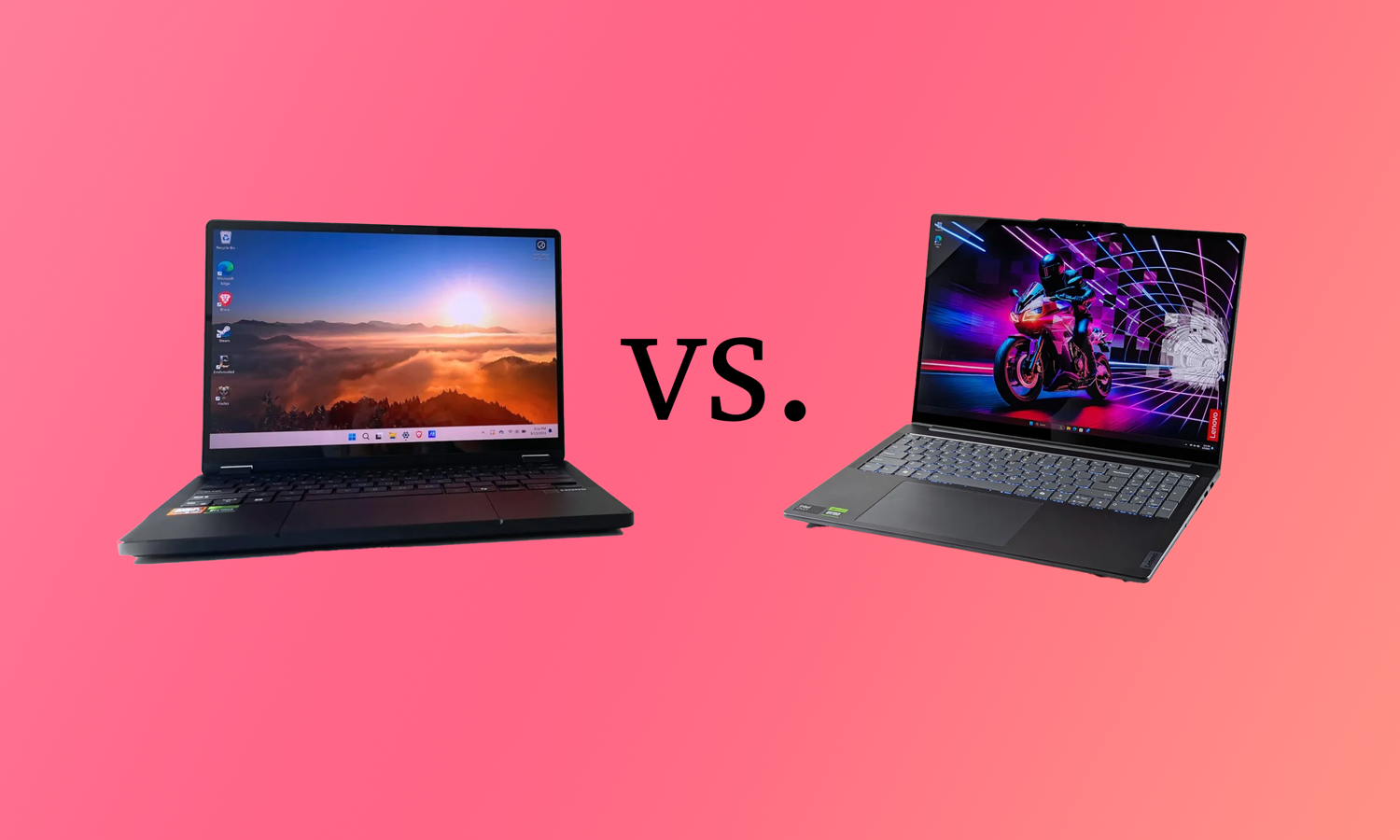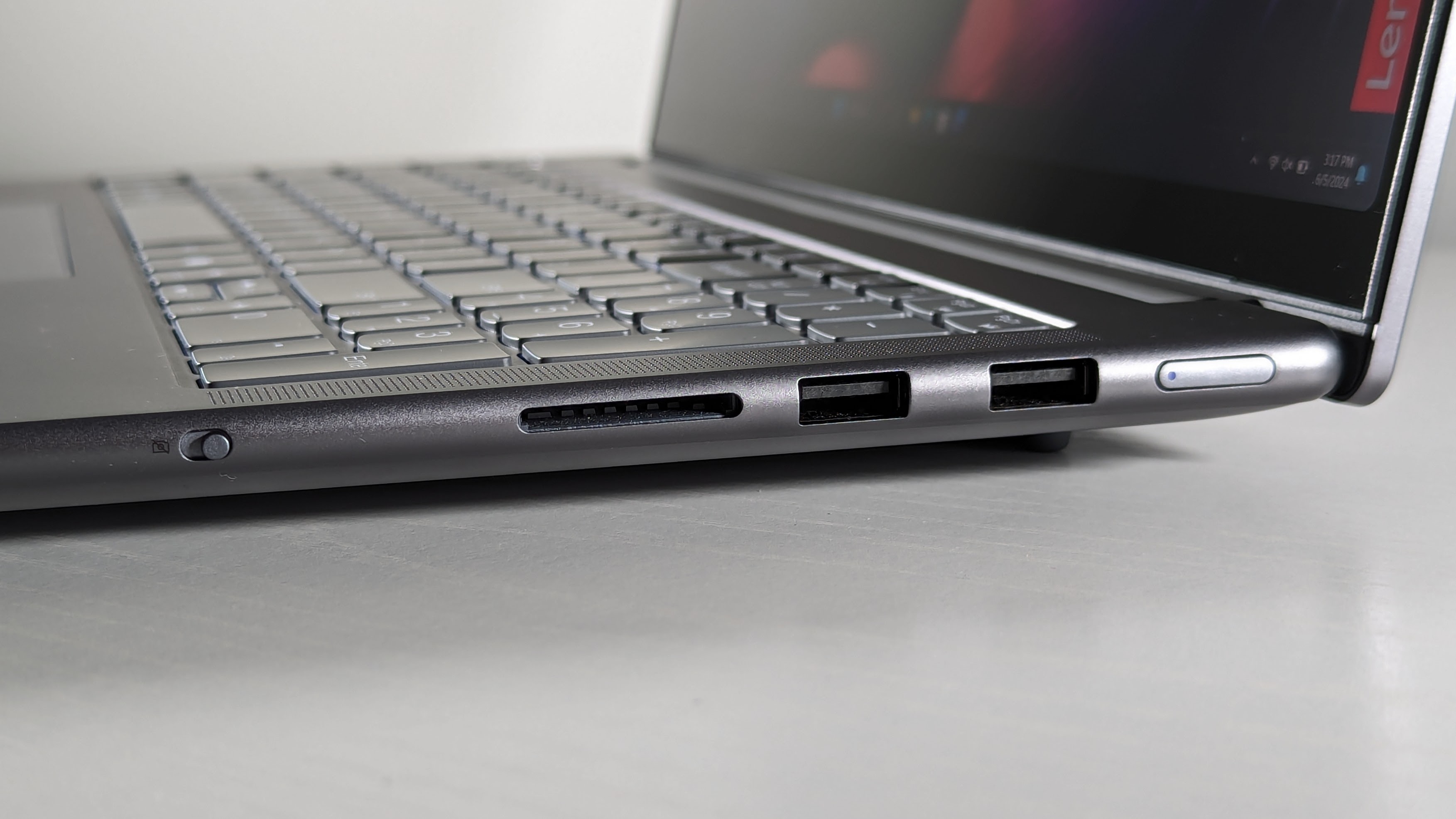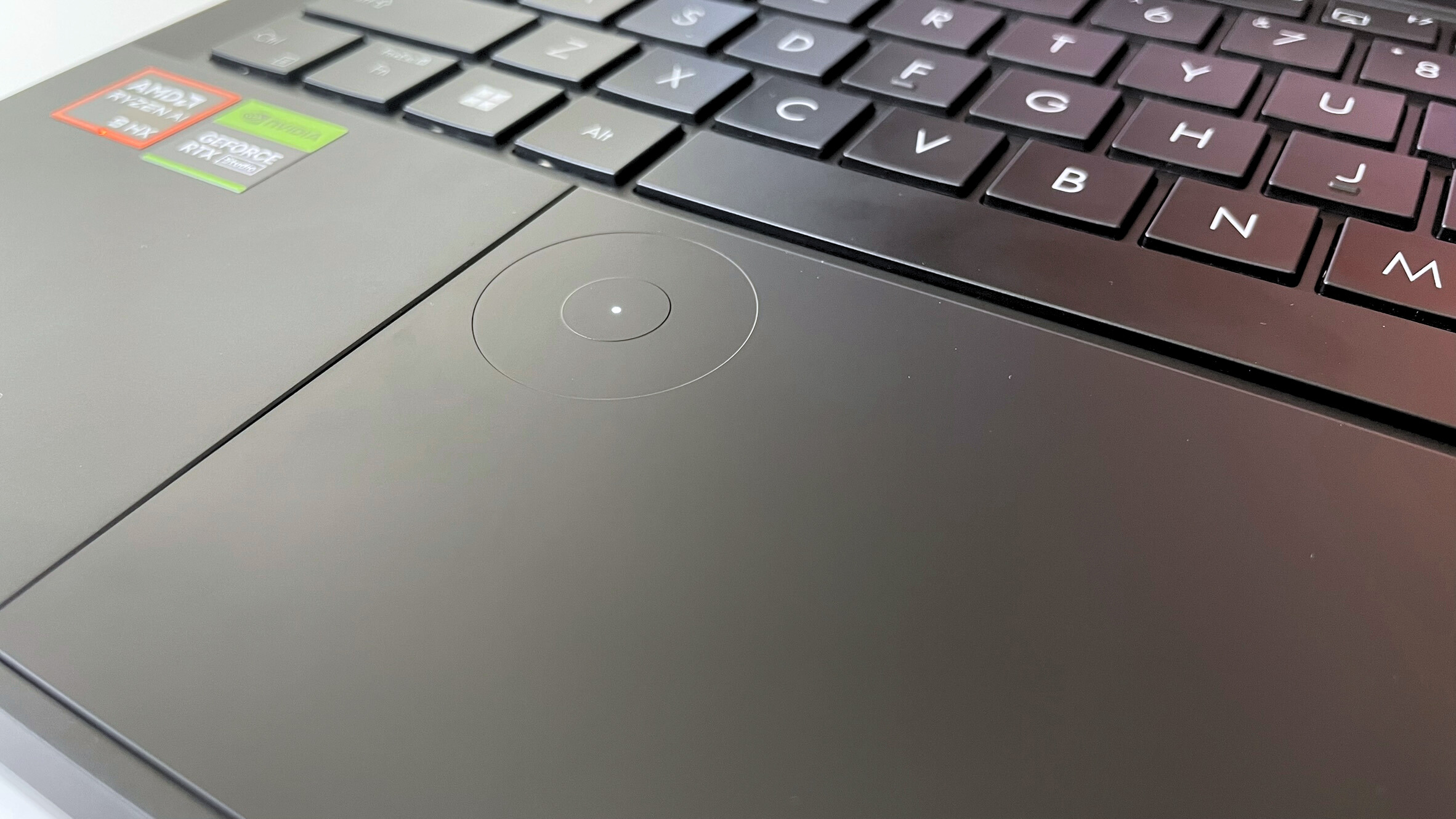
What specs are the most important in an AI-powered laptop if you’re a creative who spends most of their time editing images, video, and audio?
It’s a crucial question if you’re searching for a great laptop to do your best creative work. A few factors should be top priorities for creators, including display quality, multi-core performance, Photoshop performance, and graphics performance.
AI PCs — laptops with built-in neural processing units — add an extra dimension by offering on-device AI features, which can be used for everything from file management to AI tools in creative apps.
The Asus ProArt PX13 and Lenovo Yoga Pro 9i 16 Gen 9 are two stellar 2-in-1 AI-powered laptops for creators. If you’re looking for an outstanding laptop for video editing, animation, art, graphic design, or music, both of these laptops should be at the top of your list. They have a lot in common, but some core differences set one apart as the superior choice for creators.
Asus ProArt PX13 vs Lenovo Yoga Pro 9i: Price and configurations
Laptop Mag’s review configurations for the Asus ProArt PX13 and Lenovo Yoga Pro 9i 16 Gen 9 have a lot in common, but the pricing for each laptop differs. Plus, it’s crucial to notice that the ProArt PX13 has an AMD processor while the Lenovo Yoga Pro 9i has an Intel processor. As we’ll see in the performance, graphics, and AI benchmarks, this could make a big difference in which laptop is superior.

For around $1,700, both laptops offer an Nvidia GeForce RTX 4050 laptop GPU, 32GB of RAM, 1TB of storage, and a high-resolution touch display. While each has a different CPU, both processors have neural processing units (NPUs) for handling AI tasks.
The Lenovo Yoga Pro 9i has an edge in this category since it has a lower starting price. The base configuration includes a less powerful Intel Core Ultra processor and less RAM and storage (16GB and 512GB, respectively), but it still has the Nvidia GeForce RTX 4050 GPU, so that’s a pretty good deal.
Winner: Lenovo Yoga Pro 9i 16 Gen 9
Asus ProArt PX13 vs Lenovo Yoga Pro 9i: Design
Design often depends heavily on personal taste since some people may prefer one laptop color or size over another. The Asus ProArt PX13 and Lenovo Yoga Pro 9i 16 Gen 9 have some design similarities, but each has a completely different aesthetic.
The most notable differences are screen size and chassis color. The ProArt PX13 has a 13.3-inch display, while the Yoga Pro 9i has a larger 16-inch display. A larger or smaller display isn’t necessarily a pro or a con, but it is important to consider. A smaller display makes a laptop lighter and more portable, while a larger display offers more screen real estate for things like video editing or graphic design.
The ProArt PX13 only comes in black, and the Yoga Pro 9i only comes in silver. Both are neutral colors, but some people may prefer one over the other. It’s worth noting that both chassis are metal, so you don’t have to worry about settling for plastic, regardless of which color you prefer.
Another notable similarity is the 2-in-1 functionality in both laptops’ designs. Each laptop allows you to flip the display around to use it in tablet mode, which is perfect for professional artists and designers. Both laptops are also compatible with Bluetooth styluses.

The Asus ProArt PX13 has one unique design feature: a “DialPad” built into the touchpad. It’s a textured circular area in the top left corner of the touchpad that allows for quick navigation and precise control in creative apps. You can always turn it off if you don’t want to use it, but some creators may find it helpful, especially if you don’t have an external mouse.
Beyond personal taste, a couple of factors give the Lenovo Yoga Pro 9i a slight edge in the design category.
First, it has more ports than the ProArt PX13, thanks to an extra USB Type-A port.
Second, the Yoga Pro 9i has top-firing speakers, which are far less likely to get covered or muffled like the bottom-firing speakers on the ProArt PX13.
Winner: Lenovo Yoga Pro 9i 16 Gen 9
Asus ProArt PX13 vs Lenovo Yoga Pro 9i: Display
A great display is crucial to any good creator laptop, especially when it comes to color accuracy. The ProArt PX13 and Yoga Pro 9i have significantly different displays. The ProArt PX13 features a 13.3-inch 2800x1800 OLED touch display, while the Yoga Pro 9i has a larger 16-inch 3200x2000 IPS touch display.
The Lenovo Yoga Pro 9i 16 Gen 9 display outscored the Asus ProArt PX13
OLED displays are generally considered superior to IPS due to their higher refresh rates, contrast, and vivid colors. However, that’s not always the case in a one-to-one comparison. The Lenovo Yoga Pro 9i 16 Gen 9 display outscored the Asus ProArt PX13 despite having an IPS display rather than OLED.
The Yoga Pro 9i reproduced 105.7 percent of the DCI-P3 color gamut, while the ProArt PX13 only reproduced 80 percent. The Yoga Pro 9i also has a brighter display, averaging 373 nits, slightly higher than the ProArt PX13’s average of 350 nits.
The ProArt PX13 came close to the Yoga Pro 9i in both tests, but if you want the best display possible, the Yoga Pro 9i is the way to go.
Winner: Lenovo Yoga Pro 9i 16 Gen 9
Asus ProArt PX13 vs Lenovo Yoga Pro 9i: Performance
An excellent laptop for creators needs to be able to handle processor-intensive tasks like video editing or graphic design, so you want to choose a laptop with the best performance benchmark scores possible.
The Yoga Pro 9i 16 Gen 9 and ProArt PX13 performed admirably in our performance tests, but one laptop handily won this category.
The Yoga Pro 9i 16 Gen 9 and ProArt PX13 performed admirably in our performance tests, but one laptop handily won this category.
The Asus ProArt PX13 outscored the Lenovo Yoga Pro 9i across the board, particularly by wide margins in two essential creator benchmarks: the Geekbench 6 multi-core test and the PugetBench Photoshop benchmark.
The ProArt PX13 scored 3,062 points higher in the Geekbench 6 multi-core test and outpaced the Yoga Pro 9i by 1,866 points in the Photoshop benchmark.
These two tests are crucial to note since many creative apps take advantage of multi-core processing (rather than relying exclusively on a single core). So, that gap between both laptops’ multi-core scores is especially relevant for creators.
The Photoshop benchmark even paints a picture of how performance in one of the most popular creative apps compares between the two laptops.
These scores clearly show that the Asus ProArt PX13 has an edge in overall performance, earning it a win in this category.
Winner: Asus ProArt PX13
Asus ProArt PX13 vs Lenovo Yoga Pro 9i: Graphics
Graphics performance impacts how well a laptop can run games, but it also plays a crucial role in graphics-intensive tasks like graphic design, digital art, animation, or video editing. So, if you’re searching for a laptop for creative tasks, a good graphics processor is an essential factor to look for.
The Asus ProArt PX13 and Lenovo Yoga Pro 9i 16 Gen 9 are virtually identical in this category since they have the same GPU, an Nvidia GeForce RTX 4050 with 6GB of VRAM. The processor and RAM also factor into graphics performance, which our benchmark results show.
The Lenovo Yoga Pro 9i clinched a win in this category with higher scores in both of our main graphics tests. It scored 19,016 on the 3DMark Fire Strike benchmark, 382 points higher than the Asus ProArt PX13. Both laptops had great scores on our Civilization VI test, but the Yoga Pro 9i edged out the ProArt PX13 with a higher average frame rate.
Winner: Lenovo Yoga Pro 9i 16 Gen 9
Asus ProArt PX13 vs Lenovo Yoga Pro 9i: AI features
The Lenovo Yoga Pro 9i 16 Gen 9 and Asus ProArt PX13 are both AI PCs, meaning they were designed for AI tasks and include processors with neural processing units (NPUs).
While many creatives probably don’t need an AI art generator (and may even avoid them), on-device AI is useful for all kinds of everyday tasks besides image generation, such as powering special effects in video editing apps or automating workflows. AI can even help with small yet time-consuming tasks like file management or writing emails.
AI can even help with small yet time-consuming tasks like file management or writing emails.
If you’re interested in trying out on-device AI or already find it useful for your creative process, the ProArt PX13 and Yoga Pro 9i both offer powerful AI-ready processors. The ProArt PX13 features the new AMD Ryzen AI 9 HX 370, while the Yoga Pro 9i is equipped with the Intel Core Ultra 9 185H.
In the Geekbench ML CPU test, the ProArt PX13 scored 3,587, 725 points higher than the Yoga Pro 9i score. However, the ProArt PX13 fell behind in the Geekbench ML GPU test, where the Yoga Pro 9i won with a score of 11,228.

Based on these scores, both laptops offer strong, comparable AI performance, but the ProArt PX13 has an edge for a couple of reasons. First, there is a larger gap between the Geekbench ML CPU scores than between the GPU scores (725 points compared to 314 points, respectively).
Second, the ProArt PX13 includes a couple of pre-installed Asus apps designed for creators. For example, the StoryCube app uses AI image recognition to automate file management by organizing photos based on content in the images, such as people or locations.
Creative professionals often have thousands of photos and videos to manage, and this feature could help them quickly find and organize those files.
The ProArt Creator Hub also includes CapCut, a video editing app with AI features baked in that offers an alternative to more expensive video editing apps like Adobe Premiere Pro.
Winner: Asus ProArt PX13
Asus ProArt PX13 vs Lenovo Yoga Pro 9i: Battery life
The ProArt PX13 and Yoga Pro 9i 16 Gen 9 scored almost exactly the same in our battery life test. The ProArt PX13 lasted 9 hours and 49 minutes, while the Yoga Pro 9i survived for 9 hours and 51 minutes. So, both fell just short of the 10-hour mark, which is disappointing. The Yoga Pro 9i lasted a few minutes longer, though, so it just barely wins this category.
Winner: Lenovo Yoga Pro 9i 16 Gen 9
Asus ProArt PX13 vs Lenovo Yoga Pro 9i: Overall winner
It’s a close contest, but the Asus ProArt PX13 is the superior AI-powered laptop for creators.
However, the Lenovo Yoga Pro 9i has a slight lead in display quality and graphics performance.
Still, the ProArt PX13 outpaced it in crucial tests for creators: multi-core performance and the PugetBench Photoshop benchmark. The gaps between both laptops’ scores are also higher in these two tests than in their graphics and display scores.
It’s a close contest, but the Asus ProArt PX13 is the superior AI-powered laptop for creators.
The Asus ProArt PX13 and Lenovo Yoga Pro 9i 16 Gen 9 are both high-quality 2-in-1 laptops; many creators would be happy with either. However, if you want the best performance possible in creative apps, the Asus ProArt PX13 is the best choice. It’s also ideal for creators who want a highly portable laptop or a laptop with creator-focused AI features.
On the other hand, if you need more screen real estate and the strongest graphics performance possible, the Lenovo Yoga Pro 9i 16 Gen 9 is better for you.
Unfortunately, both laptops fell below the 10-hour mark in our battery test, so if battery life is your top priority, you may want to see our guide to the laptops with the best battery life for more options. You can also visit our guide to the best 2-in-1 laptops and the best laptops of the year for even more alternatives to compare to the Asus ProArt PX13.







